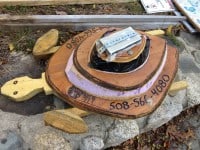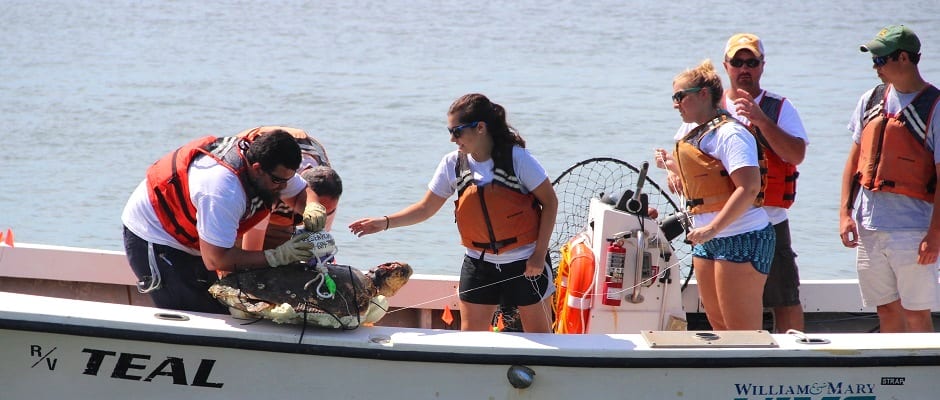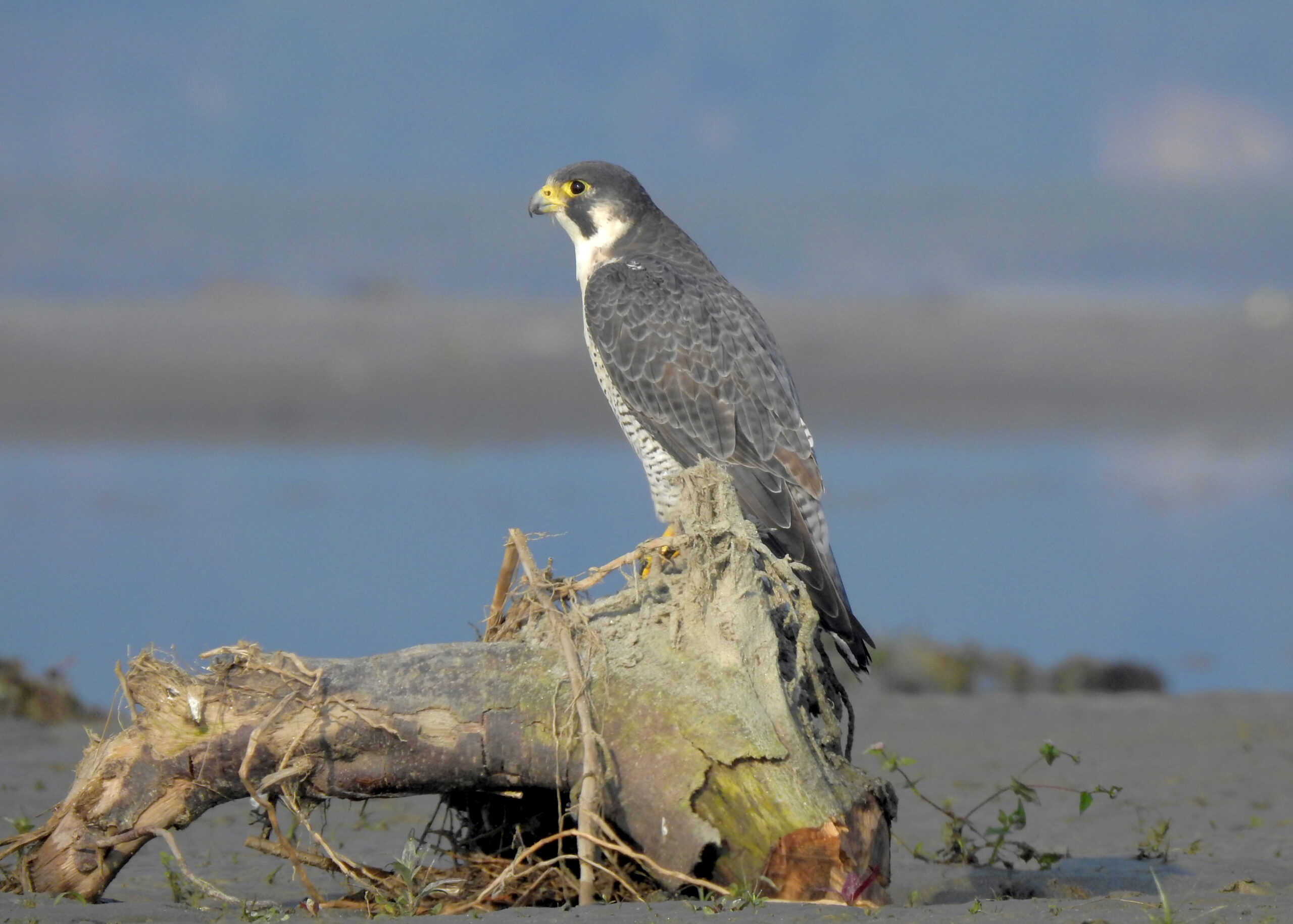Share this article
‘Frankenturtles’ may help solve turtle stranding mystery
There’s no bringing a dead sea turtle back to life. But by filling its carcass with Styrofoam and a GPS tracker, researchers can turn it into a scientific instrument, gathering information that may some day save the lives of other turtles. Last week, researchers began releasing such “Frankenturtles” into the Chesapeake Bay in an effort to understand how carcasses drift in ocean currents. The data may help reveal where and how stranded sea turtles died.
Each year, 100 to 200 sea turtles wash up on the beaches of the Chesapeake Bay, says David Kaplan — a quantitative fisheries ecologist at William and Mary’s marine lab at the Virginia Institute of Marine Science — who is leading the project. Most of them are juvenile loggerhead turtles (Caretta caretta), which migrate into the bay in late spring while older members of the federally protected species are breeding.
“Something happens when they come into the bay, and a certain number of them die. And we don’t know what the cause is,” said Kaplan. “This Frankenturtle stuff is really feeding a wider program to understand stranding events and where mortality is occurring.”
Sometimes the cause of death is obvious — a fishhook in the mouth, or a wound from a boat propeller. More often, it’s a mystery. And the turtles that wash up onshore are probably a small fraction of the ones actually dying, says Kaplan. It’s not clear how many of the deaths are related to human activity, or whether the number of strandings has changed since historic times. Records only go back to the 1980s, and numbers since then have fluctuated with changing fishing practices and improved reporting technologies, making it hard to interpret trends in turtle strandings.

Fresh turtle carcasses are hard to come by, so the researchers are also using model turtles made out of wood and Styrofoam. ©B. Santos/VIMS
To turn dead turtles into data-gathering tools, the researchers sewed GPS trackers into two turtles’ carcasses, along with Styrofoam to help them float. Turtle corpses naturally float during the bloating stage, but eventually sink again as the gas escapes. They also built two fake turtles made of wood and Styrofoam, which they hope will provide similar data with less mess and hassle, says Kaplan. Finally, to gather data about currents without the influence of wind, they constructed two simple drifters out of buckets that sit low in the water.
The researchers released their constructions on Monday, June 13. The Frankenturtles made landfall in just two to three days, carried by the wind on their domed shells, says Kaplan. The model turtles behaved similarly, though they took a little longer. The buckets, meanwhile, spent most of the week at sea, finally washing up on Friday and Saturday.
The researchers plan to release as many Frankenturtles and artificial drifters as they can over the summer, says Kaplan. They will also continue with ongoing research into the decay process, measuring factors such as how long turtles float before disintegrating. Finally, they will use the data to build mathematical models of what happens to carcasses under different conditions. These models will let the researchers map out where stranded turtles may have died, hopefully yielding clues about what killed them and whether human actions played a role. For example, if deaths are concentrated near shipping routes, it could indicate that many turtles are being struck by ships, says Kaplan.
While working with carcasses is “not pleasant,” it will be worth it if the research can help other turtles, he says.
“You can see that when they were alive, they were amazing animals. So there’s some sadness that you’re doing this,” Kaplan said. “But we know that it’s for the greater good. Our ultimate objective is to reduce these stranding events and make sure that the species survives.”
Header Image: Researchers deploy a “Frankenturtle” at the mouth of the York River in the Chesapeake Bay in June. Turtle carcasses implanted with GPS trackers are helping researchers study how sea turtles drift after they die. ©B. Santos/VIMS








